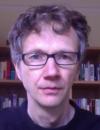Systems Modelling
Models enable us to make sense of complex systems and to predict how they will behave in differing environments.
Biological research today is increasingly dependent on sophisticated equipment that can carry out high throughput analysis of thousands of experimental samples, generating huge volumes of data. These data then need to be processed, analysed, visualised and stored to create new biological insights.
To make sense of these data we often create mathematical models, which give us a new level of insight into biological systems. We can then test the predictions of these models experimentally and further refine them to reflect accurately what happens in nature.
Vision
Our goal is to create mathematical models that accurately describe dynamics at the subcellular, cellular and multicellular length scales which will give us insight into the complex behaviour exhibited by biological systems and to engineer biological functions, predictably, under different circumstances.
Expertise
The models and theory we have generated are providing unique insights into the behaviour of living systems: we are gaining insights into the relationship between gene expression, the cell cycle and cell growth; how cross-talk between cells in a tissue modifies sub cellular dynamics; how climate change might influence plant growth; how yeast grow and divide so we may improve industrial fermentation; and how microbes can develop resistance to antibiotics.
Case Studies
Building memory through proteins

Life responds to change. Yet for that response to be useful, an organism must recognise and remember — if only briefly — the nature of the change. Moving from the sun into the shade, we detect the lower levels of light and convert this observation into neural signals and then into dilated irises. But how do single-celled organisms, which lack a nervous system, deal with change in their environment?
Using fluorescent proteins from jellyfish to follow molecules inside cells, Professor Peter Swain and colleagues have shown that although from the outside single cells of baker's yeast appear to sit passively when their source of food disappears, there are dramatic intracellular changes. Transcription factors, the protein conductors of gene expression, zip into or out of the cell's nucleus, where the genome is stored. The detection of a change outside by proteins at the cell's surface becomes a sudden swirl of motion inside: some transcription factors exit the nucleus; others enter; others still pulse in and out.
It is this motion that allows the cells to remember a change in their environment. Rather than the pulses of electrical activity used by our brain to represent the external world, yeast, at least, use the movement of potentially hundreds of proteins. By adapting the mathematics developed to improve telecommunications, the lab can quantify how easy it is to figure out the nature of the new environment from these intracellular movements alone. They show that this task becomes easier if they observe how a protein moves rather than only where in the cell it ends up.
In this sense, they demonstrate that yeast encode information about their external world in the movements of intracellular proteins.
Precision engineering of metabolite biosensors

Mathematical modeling and wet-lab engineering reveal how genetic tuning shapes biosensor function. This enables precision engineering of gene circuits for basic science and microbial cell factories.
Cells have evolved complex regulatory systems to adapt in fluctuating environments. At the heart of these circuits are proteins known as transcription factors, which behave as biosensors that control gene expression in response to changes in intracellular concentrations. In the new era of synthetic biology, biosensors are key components for reprogramming cells, but fine-tuning cell behaviour is limited by our poor understanding of their tunability.
Biosensors bind to an inducing metabolite and alter gene expression by binding to the DNA. Their overall input-output behaviour can be represented by a dose-response curve. Two key features of response curves are their dynamic range and sensing threshold. These two parameters determine the strength of biosensor output for various input concentrations. In synthetic biology, genetic engineering is typically employed to shape dose-response curves to a desired specification. Experiments carried out by Drs Diego Oyarzún and Fuzhong Zhang revealed that changes to the sensor-DNA interaction affect both dynamic range and threshold simultaneously. This indicates the existence of trade-offs between the ability to either sense low chemical abundance or increase biosensor output. They used mathematical models to elucidate the interdependencies between the dose-response curves and genetic modifications. Combining model analysis and genetic engineering, we found two tuning dials that allow for independent control of the dose-response parameters. These findings are crucial for fine-tuning biosensor function through genetic and protein engineering, with applications in basic science as well as the construction of efficient microbial factors for the production of commodity chemicals.
You can read more about Diego's research in the following articles:
How Maths can Revolutionise Medicine
The Mathematics of Life: Metabolic control in living cells
For further information about this research theme, please contact:
See also

